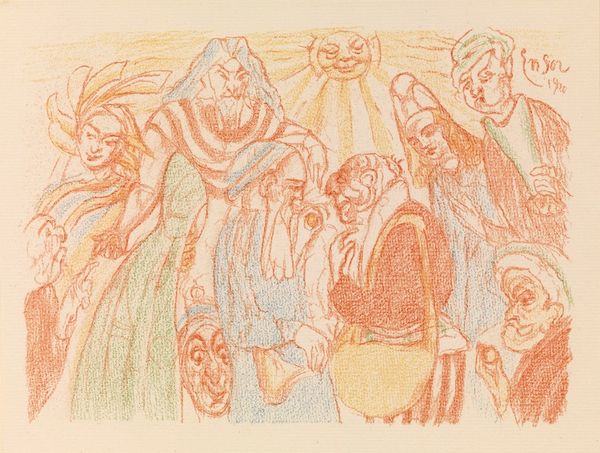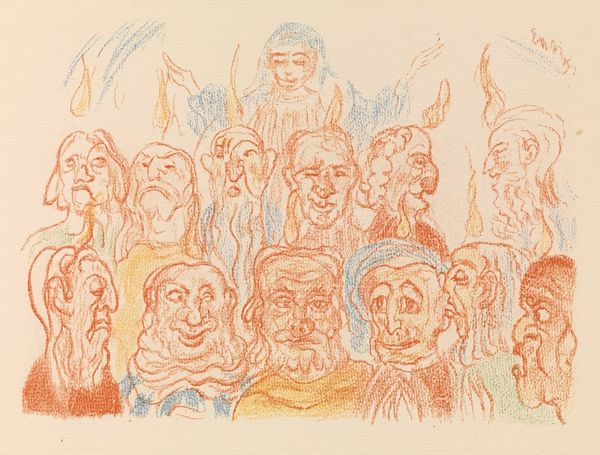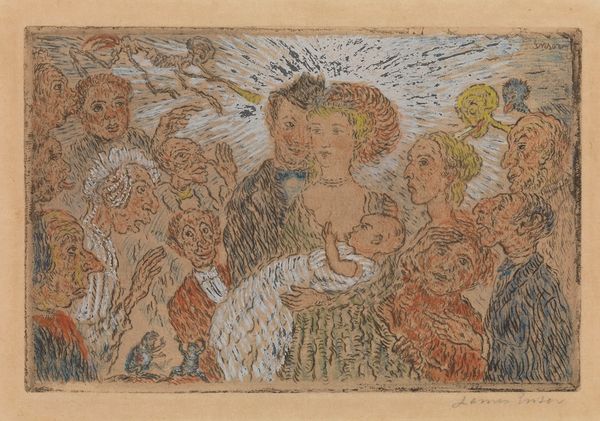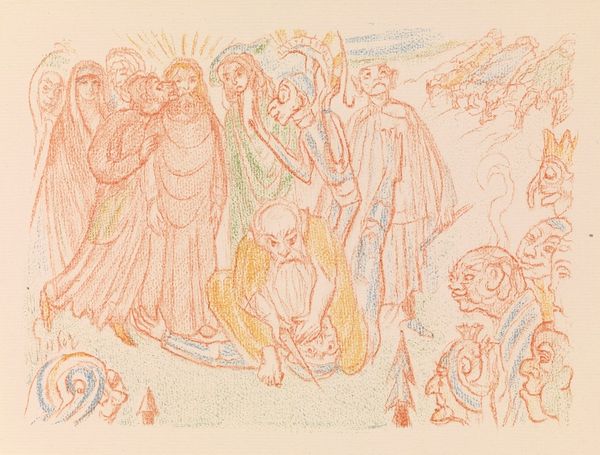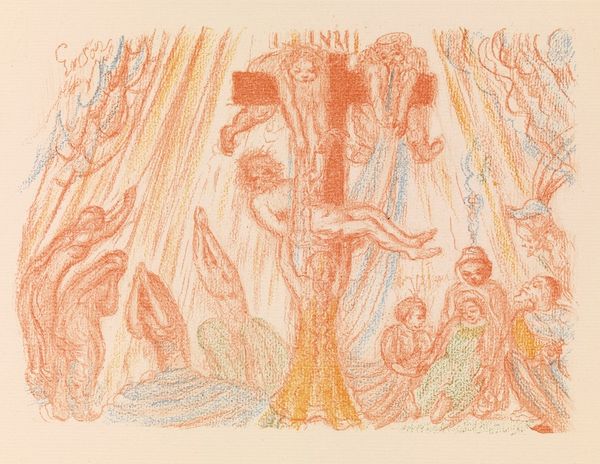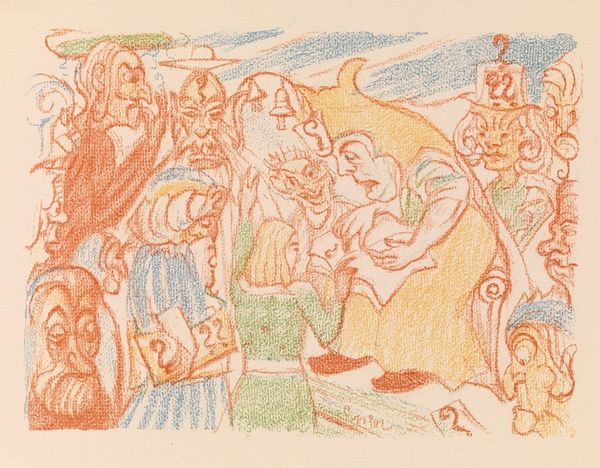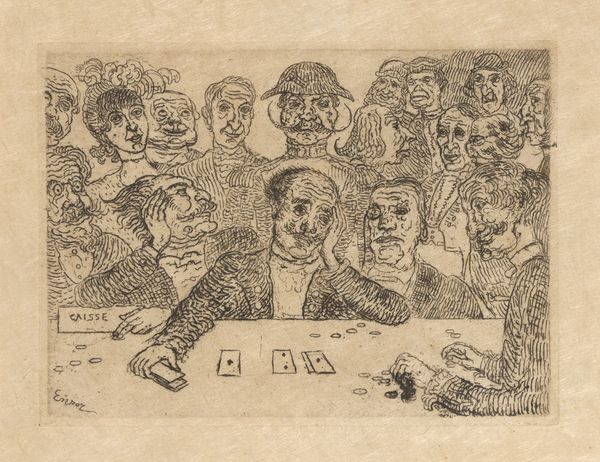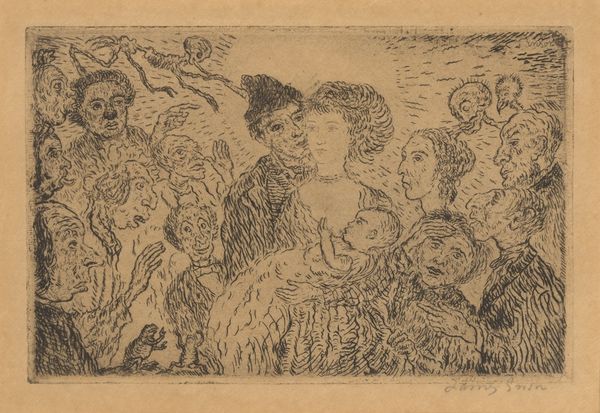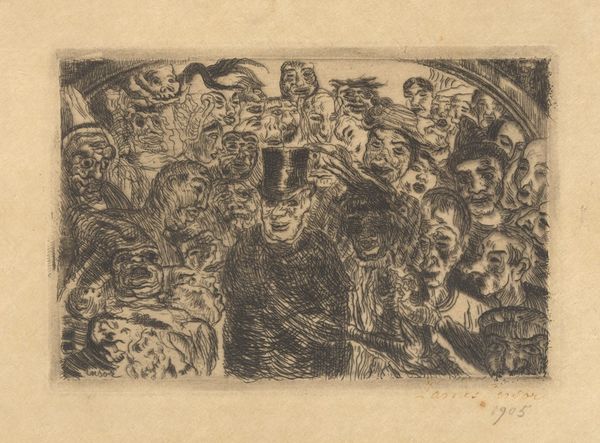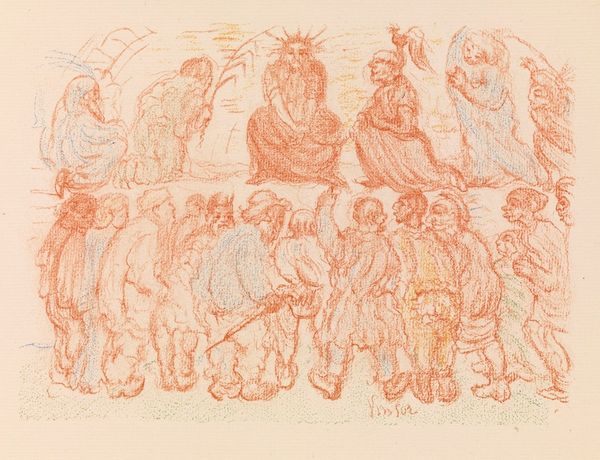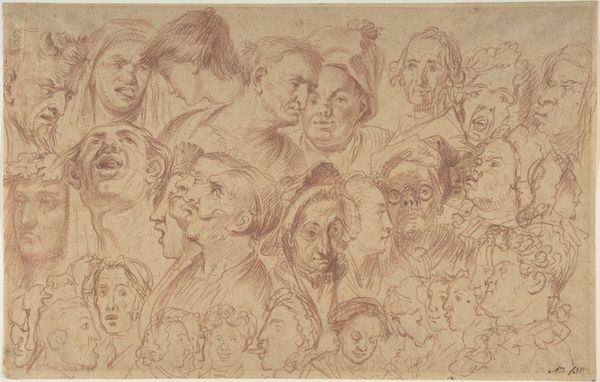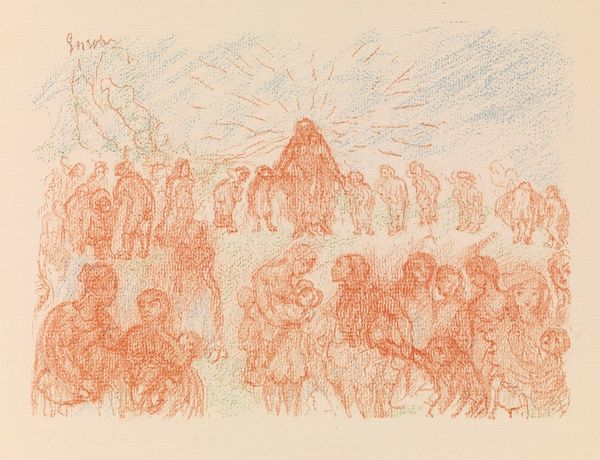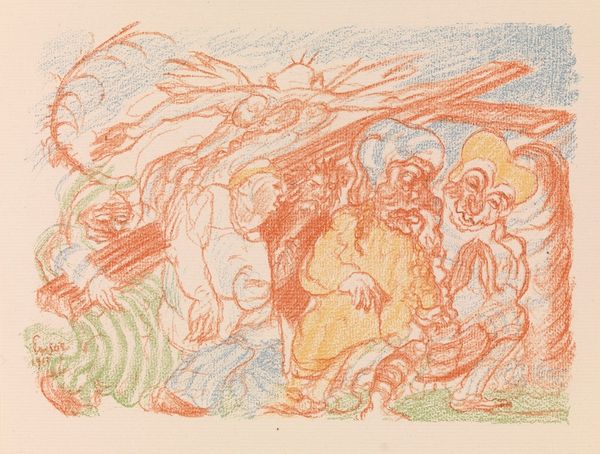
drawing, pencil
#
portrait
#
drawing
#
ink drawing
#
pen sketch
#
figuration
#
group-portraits
#
pencil
#
expressionism
Copyright: Public Domain: Artvee
Curator: James Ensor’s drawing, “Christ Before his Judges,” created in 1921. It’s rendered primarily in pencil and ink. What strikes you initially about this piece? Editor: The intensity. The faces, the expressions, all etched with this almost frenzied energy. It looks like a study of a mob, but with each figure individually rendered with a sharp pen. It seems more concerned with documenting than dramatizing. Curator: Right. The figures almost seem piled on top of each other, competing for space, each with his distinct expression. This composition reflects a recurring theme in Ensor's oeuvre: the corrupting influence of societal hierarchies and the individual’s struggle against unjust authority. Think about the historical context. Editor: That layering becomes a central aspect of the means of production as well: the almost compulsive pen strokes, the repetition, a kind of artistic labour mirroring the mob mentality depicted, like he is constructing, literally with physical material, these historical forces. Curator: Precisely, and in his depictions of Christ throughout his career, we see a figure who often becomes symbolic of marginalized identities facing societal condemnation, very much reflecting the turbulence of the interwar period. His masklike figures are never just characters; they are critiques. Editor: Looking at it from a Materialist perspective, the materiality of the drawing also is important—paper, pencil, ink. Cheaply reproduced to spread the idea behind the work. Think also of what it meant to use those industrial materials instead of expensive, refined ones at that time. Curator: The very accessibility underscores Ensor’s radical ethos. Christ, in this instance, represents a call for a moral reckoning, a mirror held up to the viewers themselves. The figures press in with questions of guilt, challenging viewers of the work with their legacy in relation to such injustice. Editor: Ensor's decision to represent such a loaded historical subject in relatively accessible materials and means of making feels so charged with intent. To bring the powerful down by demonstrating that high ideals can and should exist among all people. Curator: Considering both the artwork's message and his method, this pen drawing compels us to question our own participation, past and present, in these narratives. Editor: Right, art-making is embedded within power structures and modes of reproduction—which forces us to reflect on what ethical making should be and how it's made.
Comments
No comments
Be the first to comment and join the conversation on the ultimate creative platform.
